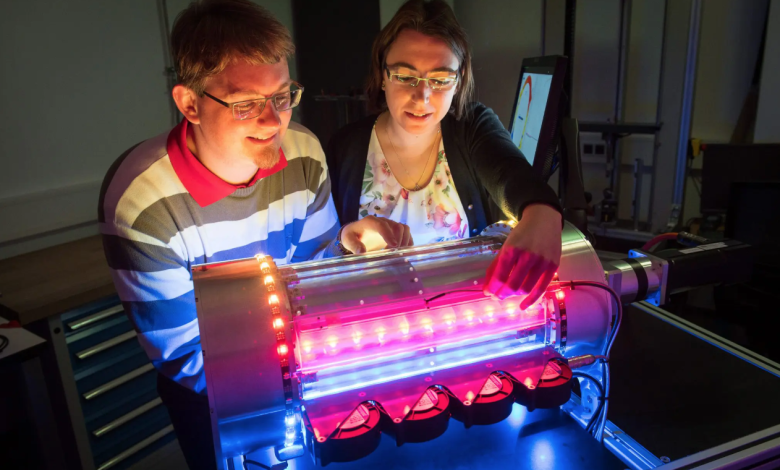Shape-memory materials for ecological air conditioning

The demonstration prototype of the elastocaloric chiller will be on display in Hanover
(Sustainabilityenvironment.com) – Ecological climate control is ready to “build muscles“. In reality. It happens in Germany where a group of scientists has created a new cooling/heating technology based on so-called “shape-memory materials“. These are polymers or metal alloys capable of passing, in a cyclic way, from a deformed state to the original shape following an external stimulus.
The new system takes advantage of this ability to increase working efficiency and get rid of traditional refrigerants harmful to the climate. The innovation is the result of a group of academic and industrial researchers from Saarland University and the Center for Mechatronics and Automation Technology (ZeMA). The team, led by Professor Stefan Seelecke, created an ecological air conditioning system using nickel-titanium (nitinol) wires, an alloy of shape-memory materials. This material releases heat when it is mechanically deformed in its super-elastic state and absorbs it when it returns to its original form.
Ecological air conditioning with shape-memory materials: how does it work?
The operation is simple in theory. The wires are subjected to charge/discharge cycles (deformation and release) controlled at room temperature. And as Seelecke explains “when they are discharged, they cool down to about 20 degrees below the ambient temperature“. Scientists have already developed the first demonstrator that can operate continuously, presenting it these days at the Hanover Fair.
“We use the properties of nickel-titanium to dissipate heat,” said Susanne-Marie Kirsch, who helped develop the cooling system as part of her doctoral project. “The basic idea is to allow the memory wires of prestressed and superelastic form to relax and then cool the space by removing the heat from it”. The heat absorbed by this kind of artificial muscle is then released outside when the alloy is again stressed in the surrounding environment.
Read also Home air conditioning: the need for cooling is growing in Europe
Obviously, the team’s eco-friendly air conditioning system is significantly more complex. Scientists have designed and developed a cooling circuit in which a cam drive (patent pending) rotates such that bundles of nitinol wires 200 microns thick are alternately stretched and relaxed. Air is blown through the beams in two separate chambers: one is heated, and the other is cooled. As a result, the machine can cool down and warm up. The result? “Our process […] is much more efficient than current air conditioning technologies and up to fifteen times more efficient than conventional refrigerants,” explains Seelecke.
The final objective of the scientists is to further develop their electrocaloric technology for the cooling of electric vehicles.





